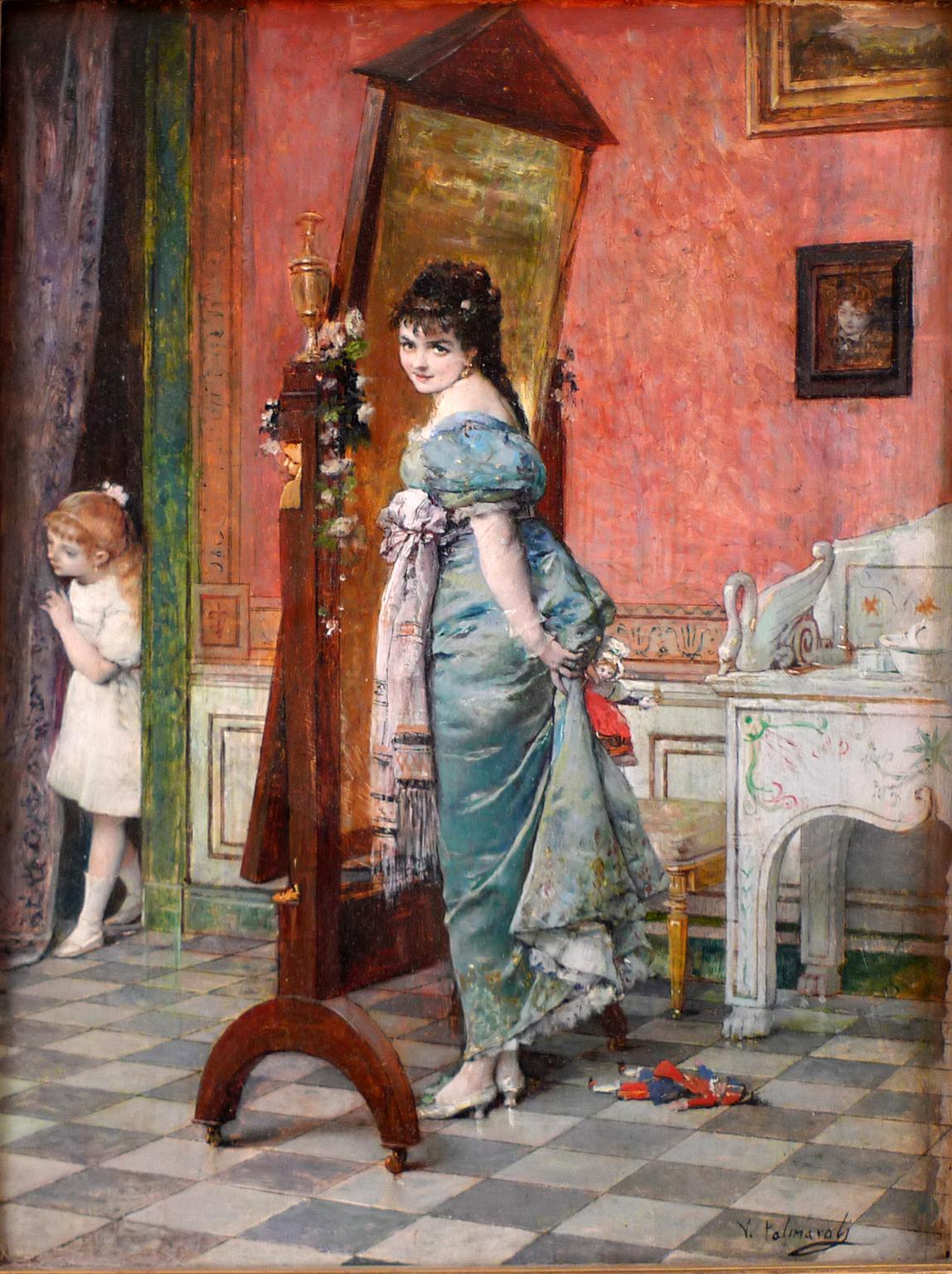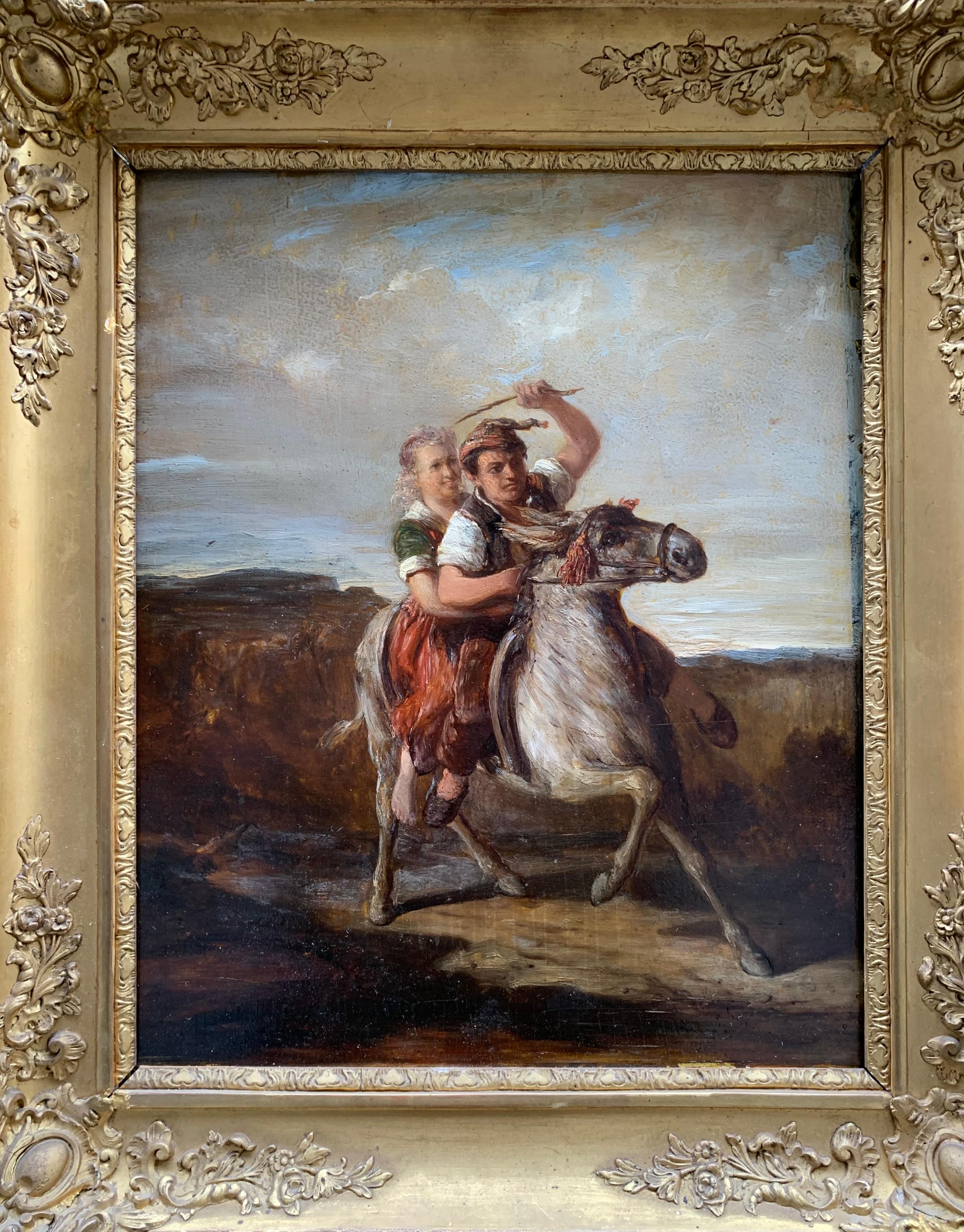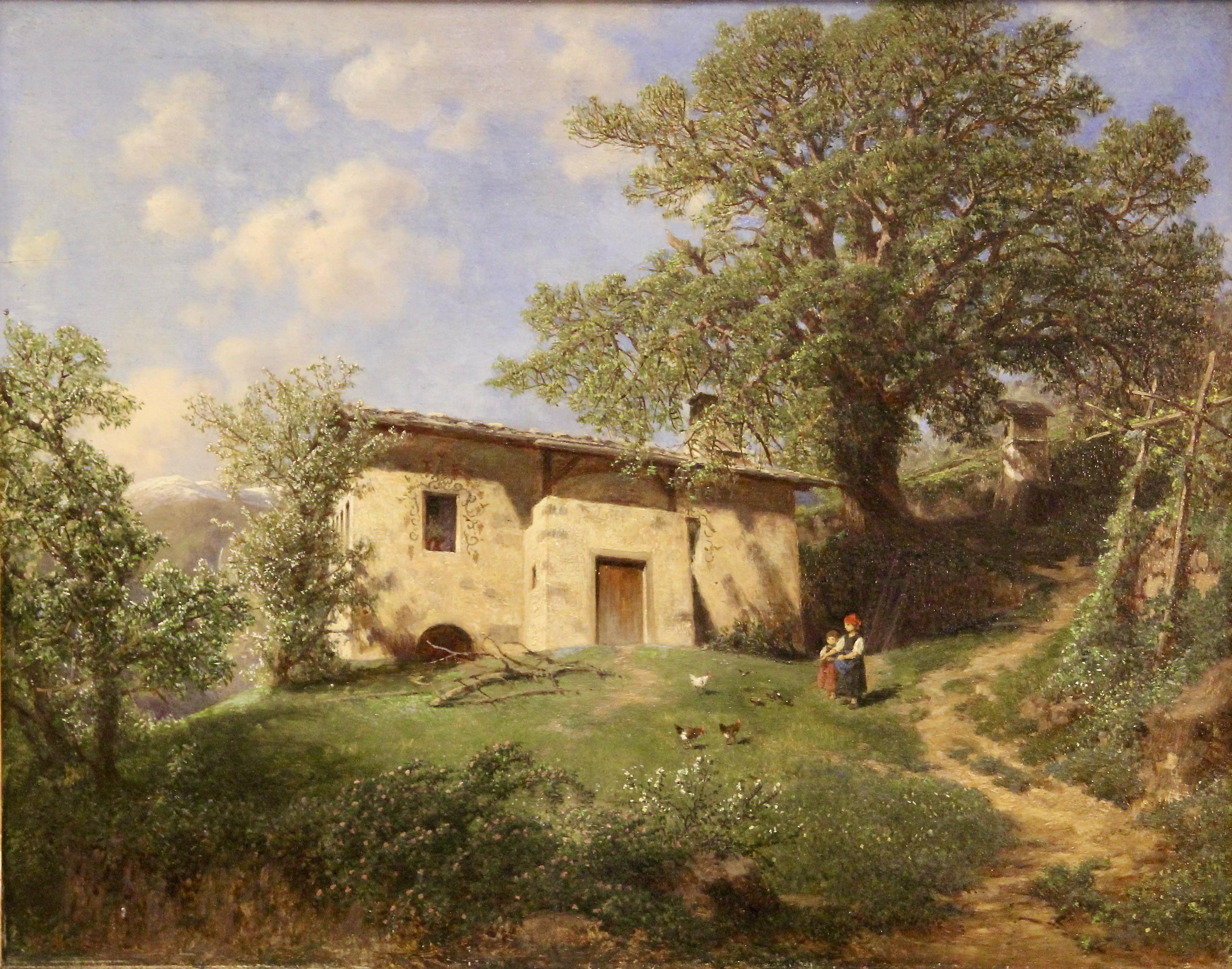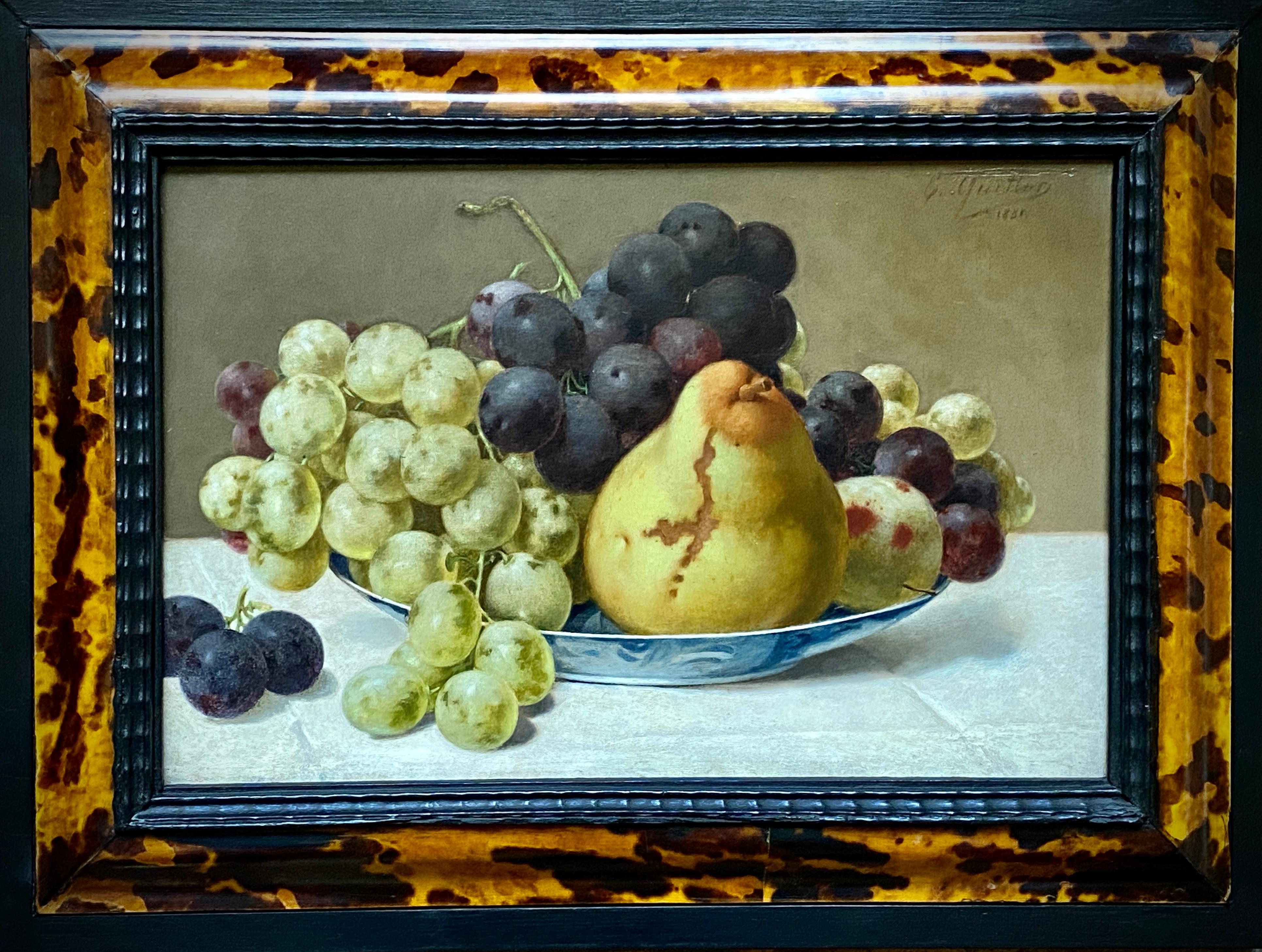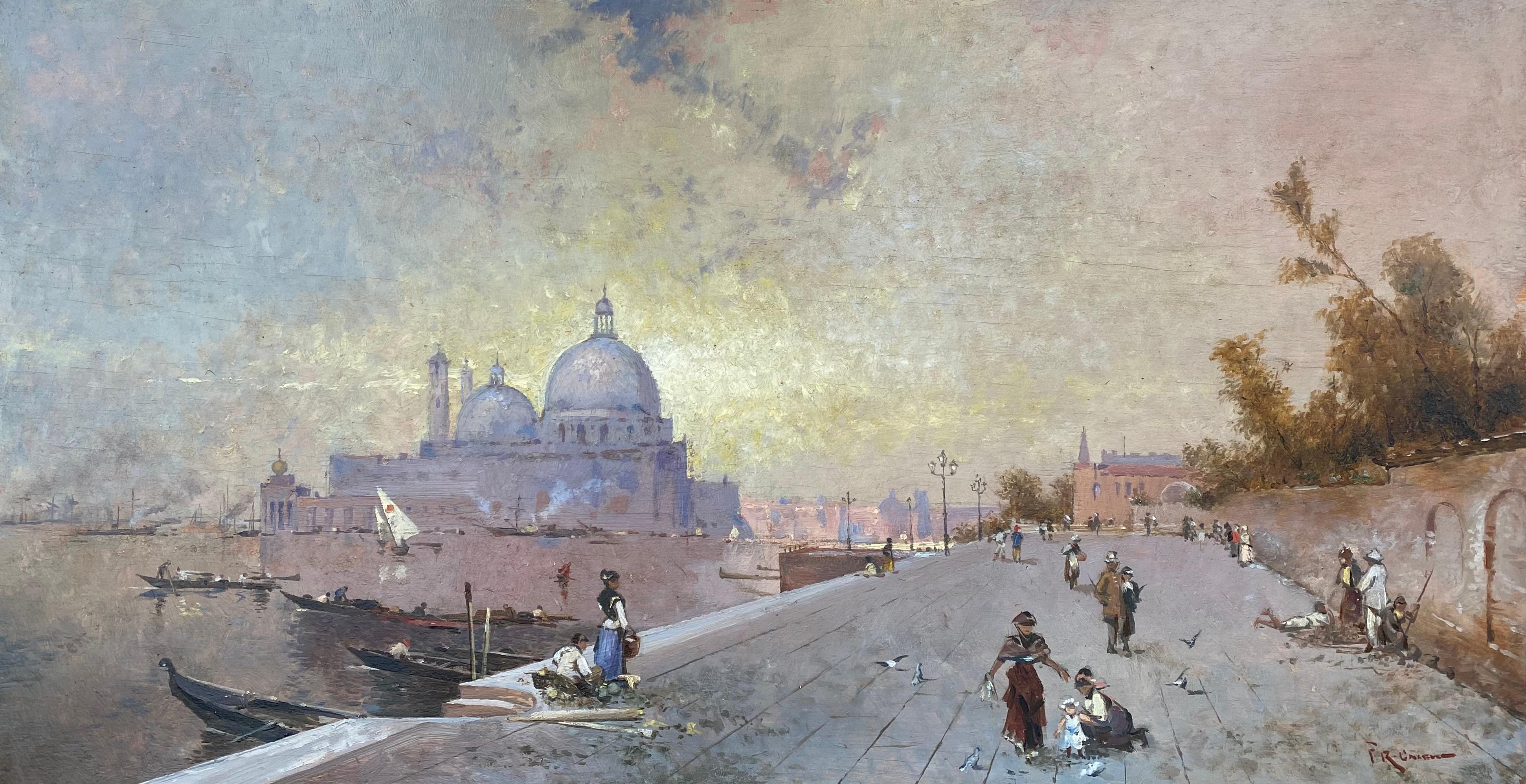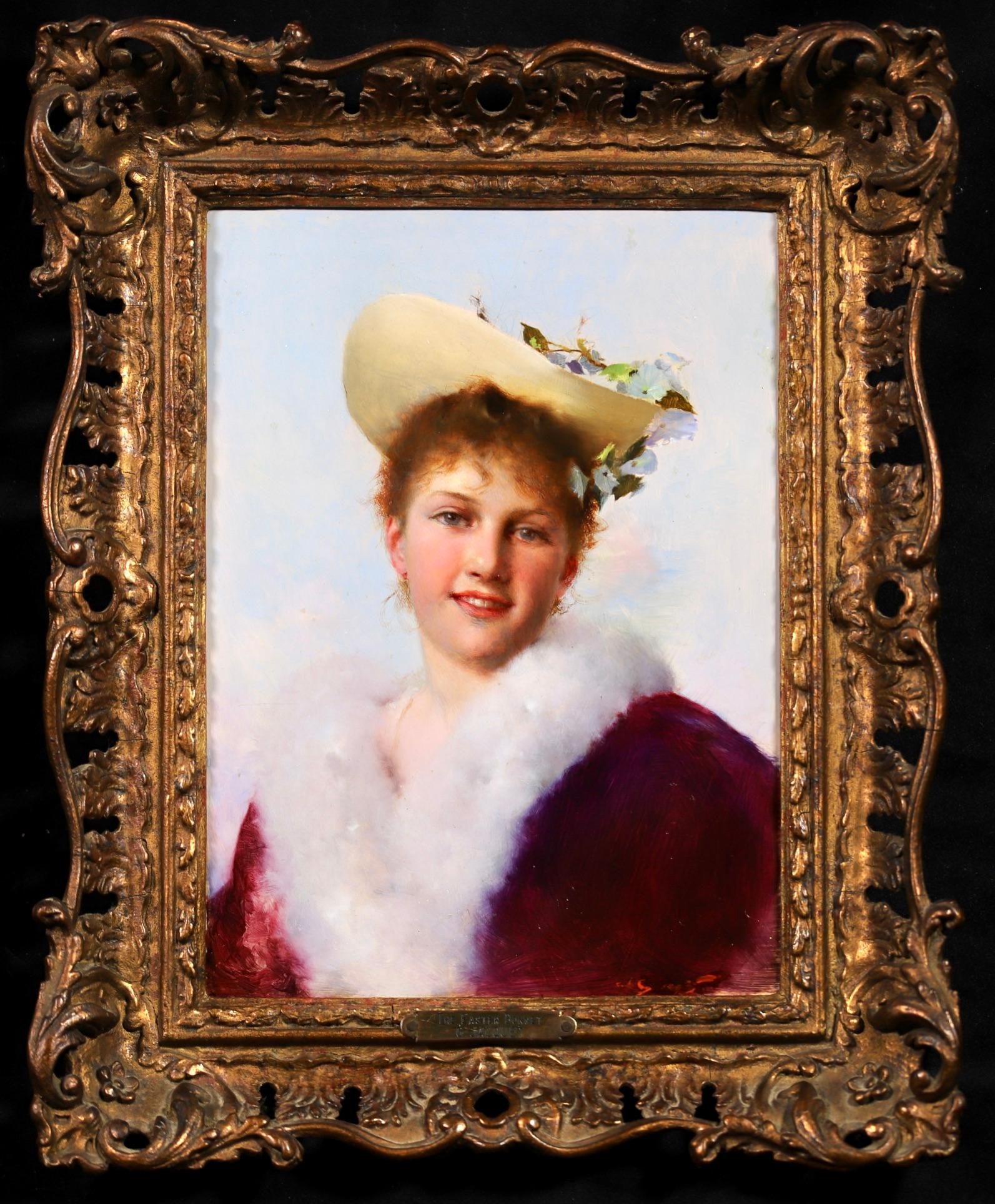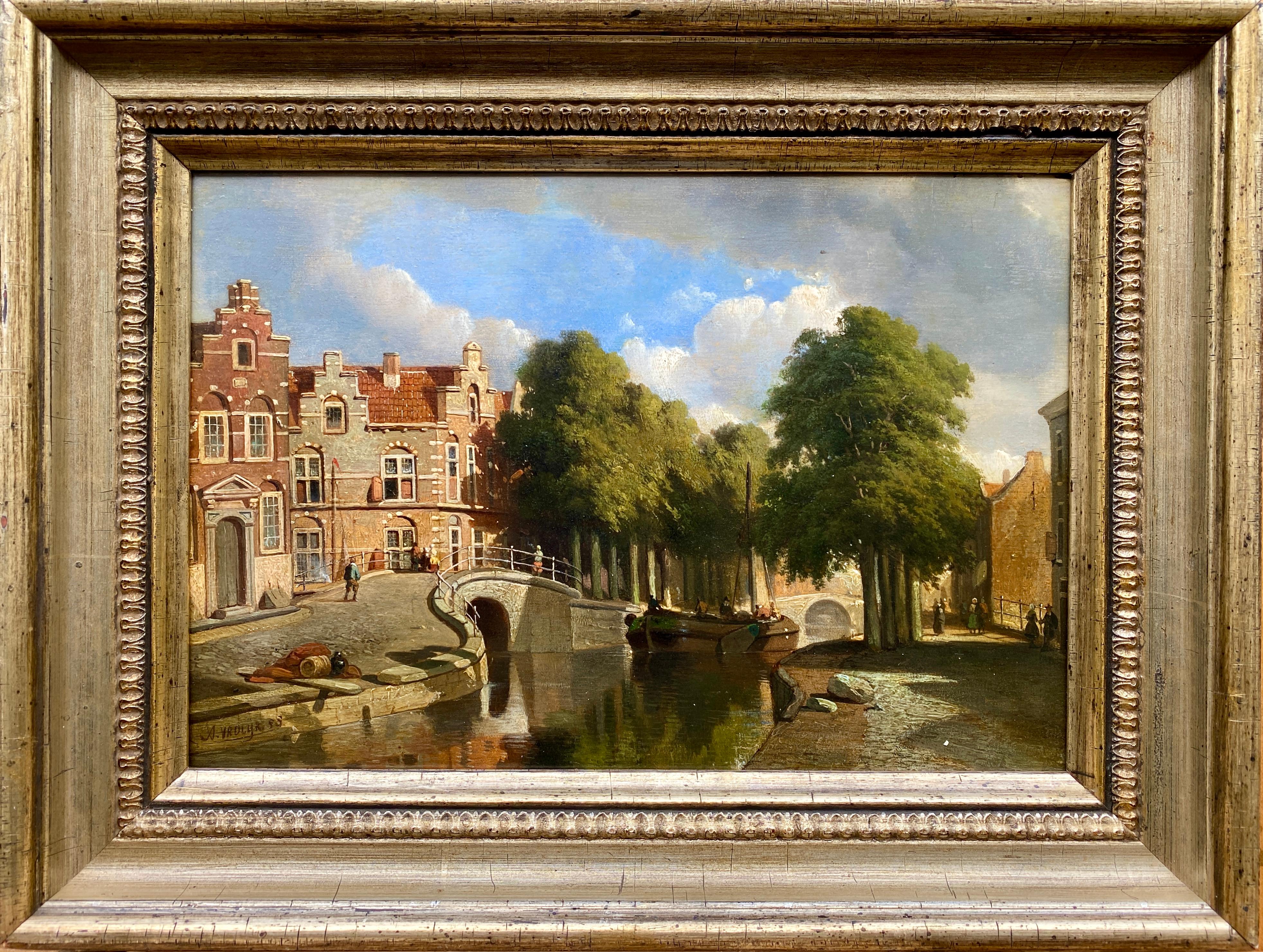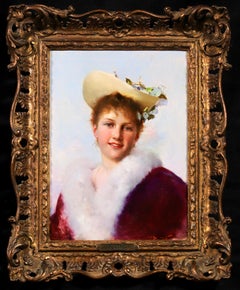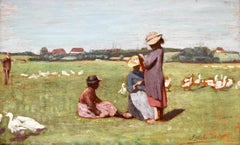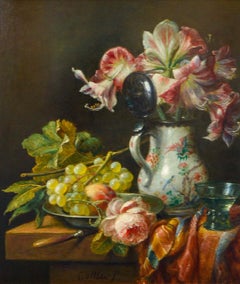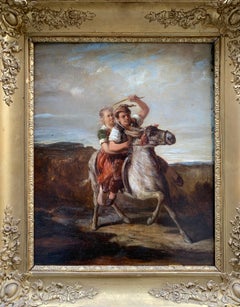
The Kiss
View Similar Items
Want more images or videos?
Request additional images or videos from the seller
1 of 6
Henri-Pierre PicouThe Kiss1891
1891
About the Item
About the Seller
5.0
Platinum Seller
These expertly vetted sellers are 1stDibs' most experienced sellers and are rated highest by our customers.
Established in 2001
1stDibs seller since 2016
668 sales on 1stDibs
Typical response time: 3 hours
More From This SellerView All
- The Easter Bonnet - Romantic Portrait Oil Painting by Gustave Jean JacquetBy Gustave Jean JacquetLocated in Marlow, BuckinghamshireSigned oil on panel portrait circa 1890 by French Romantic painter Gustave Jean Jacquet. The work depicts a young redheaded woman wearing a red velvet jacket lined with white fur. On her head she is wearing an Easter bonnet trimmed with leaves. Signature: Signed lower right Dimensions: Framed: 14"x11.5" Unframed: 10"x7.5" Provenance: Baron Fine Art...Category
1890s Romantic Portrait Paintings
MaterialsOil, Panel
- Coucher de Soleil sur la Montagne - 19th Century Oil, Mountain Landscape - DuhemBy Henri DuhemLocated in Marlow, BuckinghamshireOil on panel by Henri Duhem depicting an elegant woman walking by trees in a landscape with the colours of the setting sun reflecting from the mountains beyond. Signed lower right an...Category
1920s Impressionist Landscape Paintings
MaterialsOil, Panel
- Enfants et les oies - Realist Oil, Figures & Geese in Landscape by Paul DruardLocated in Marlow, BuckinghamshireA beautiful and charming oil on panel circa 1890 by French realist painter Paul Druard. The work is a depiction of farm life. A mother is seated on the grass with a daughter seated t...Category
1890s Realist Figurative Paintings
MaterialsOil, Panel
- Paysan dans un verger - Impressionist Oil, Spring Landscape by Henri Le SidanerBy Henri Le SidanerLocated in Marlow, BuckinghamshireSigned and dated oil on panel figure in landscape by sought after impressionist painter Henri Le Sidaner. The work depicts a farmer walking beneath blossom trees in an orchard in spr...Category
1890s Impressionist Landscape Paintings
MaterialsOil, Panel
- Fete Champetre - Symbolist Figurative Oil Painting by Ker Xavier RousselBy Ker Xavier RousselLocated in Marlow, BuckinghamshireSigned symbolist oil on panel circa 1910 by French Les Nabis painter Ker-Xavier Roussel. This beautiful painting depicts nudes and figures dressed in robes in a wooded landscape. Signature: Signed lower left Dimensions: Framed: 31"x40" Unframed: 23"x32" Provenance: JPL Fine Arts - London c. 1985 Ker-Xavier Roussel met Édouard Vuillard at the Lycée Condorcet, which they both attended. Together they visited Eugène Ulysse Napoléon Maillard's studio, where Roussel became acquainted with Charles Cottet, going on to study at the Académie Julian under Bouguereau and Jules Lefebvre. There, he became interested in the Synthetism promoted by Sérusier, following Sérusier's heeding of the line Gauguin had adopted in Pont-Aven. He joined the Nabis group. He and his friends form a link between the Impressionists - he knew Cézanne, Degas, Renoir and Monet - and the Fauves and Cubists. In his earliest paintings, Roussel adopted a dark palette for Realist still-lifes. Later, his work bore the influence of Gauguin, Sérusier, the Nabis and Cézanne, in Intimist scenes painted in flat tints not yet clearly delineated. Their dull, saturated tones are reminiscent of Cézanne. In about 1900 he started painting mythological scenes full of nymphs and fauns and set in his home region of Île-de-France. After a bicycle trip in Provence with Maurice Denis, during which he met Cézanne, he lightened his palette, much taken by the cloudless skies below which he would now set the mythological and idyllic compositions which link him to Poussin and Corot. This wondrous, unreal world found its way into large-scale works, including the stage curtain of the Champs-Élysées theatre in 1913, a large Pax Nutrix for the Palais des Nations in Geneva and Dance for the Palais de Chaillot in 1937. He is best remembered for: Silenius' Triumph, Polyphemus, Diana, The Abduction of the Daughters of Leucippus. The nymphs and fauns of a mythology quite his own appear in clearings and woods from the outskirts of Paris, but the sun they rejoice in is Mediterranean. To capture the vibration of bright colours under a permanent sun, he later turned to pastels. He was more a Symbolist than a Nabi and signed himself K.-X. Roussel. He also produced lithographs. He took part in exhibitions from 1891 with the Groupe des Vingt at le Barc de Bouteville's gallery in Brussels. Then he exhibited in Revue Blanche Painters ( Les Peintres de la revue blanche) in Paris; with the Nabis at Café Volponi in Paris; before World War I with Free Aesthetics in Brussels; from 1901 at the Salon des Indépendants and the Salon d'Automne; in the 1930s in Revue Blanche Painters ( Les Peintres de la Revue blanche) hosted in Paris by designer Bolette Natanson, the daughter of the Revue Blanche's owner. He took part in The Masters of Contemporary Art ( Les Maîtres de l'art contemporain) at the Musée du Petit Palais in Paris, and at the 1938 Venice Biennale and 1939 New York World Fair. He featured posthumously in Toulouse-Lautrec and the Nabis ( Toulouse-Lautrec et les Nabis) at Bern Kunsthalle; From the Revue Blanche ( Autour de la revue blanche) in the Galerie Maeght, Paris, and in Tokyo and Brussels. He had one-man shows in Paris before his death in 1944. Retrospectives were mounted in the 1960s in London and Bremen. Museum and Gallery Holdings: Geneva (Petit Palais): Haystacks on the Seaside Paris (BNF): Training the Dog; Landscapes (engraving); Nymph and Faun (c. 1895, etching) Paris (Louvre): Poject for a Screen (drawing) Paris (MNAM-CCI): The Road (c. 1905); The Cyclops (1908); Venus and Cupid on the Seafront (1908); The Abduction of Leucippus' Daughters (1911); Pastorale (1920); Diana at Rest (1923); Portrait of Vuillard (1934) Paris (Mus. d'Orsay): The Gate (pastel); Woman in Profile with Green Hat; In Bed; Félix Valloton...Category
Early 20th Century Symbolist Figurative Paintings
MaterialsOil, Panel
- Nu allonge - Post Impressionist Nude Figurative Oil - Georges D'EspagnatBy Georges d'EspagnatLocated in Marlow, BuckinghamshireSigned oil on panel nude circa 1920 by French post impressionist painter Georges D'Espagnat. The work depicts a nude woman laying a patch of green grass on top of a hill with a view of the valley in the distance. Signature: Signed lower right Dimensions: Framed: 16"x20" Unframed: 9"x13" Provenance: A certificate of authenticity for this work is available from Mr. Jean Dominique Jacquemond upon request Private French collection From the beginning of his career, it was a constant concern of Georges d'Espagnet to assert his originality. His studies at the École des Arts Décoratifs, Paris, did not last very long, for he wanted immediate independence and decided to follow courses in the private academies of Montparnasse. In about 1900, he became acquainted with Maurice Denis, Bonnard and Vuillard, and his collaboration with Denis led to a renewal of religious art in France. In 1903, d'Espagnet was one of the founders of the Salon d'Automne, and was appointed professor in charge of studios at the École des Beaux-Arts, Paris, in 1934. He illustrated a number of books: Rémy de Gourmont's Evil Prayers ( Oraisons mauvaises) (1896), The Saints of Paradise ( Les Saintes du paradis) (1898), Simone (1907), Sistine ( Sixtine) (1922); Alphonse Daudet's The Immortal ( L'Immortel) (1930); André Gide's The Pastoral Symphony ( La Symphonie pastorale); Francis Jammes' Clearings in the Sky ( Chairières dans le ciel) (1948). D'Espagnet belongs to the group of artists who made the Courrier Français so successful. The drawings of his which are published in it are strongly expressive and some bear comparison with the designs of the great Renaissance masters. He also contributed to L'Image. He often placed cheerful nudes in a landscape, reminding us that, though he moved away from the Fauves, he retained their freedom of colour and arabesque. He painted many portraits, including those of Albert André, André Barbier, Victor Boucher, Déodat de Séverac, Albert Marque, André Marty and Albert Roussel. He also painted mural decorations, including a wall for the Palais de la Découverte (1937), the ceiling of the Victor Hugo Room in the Palais du Luxembourg (1939), a decorative panel for the Palais de Justice, Toulouse (1941) and interior decorations for private houses. His landscapes are Impressionist in inspiration, and work for a certain sobriety, an intimacy, both in their composition - one, two or three sketched figures and large open spaces - and in the choice of colours and treatment with the special hazy brushstroke that marks his style. D'Espagnet took part in a number of annual Parisian exhibitions, including the Salon des Indépendants, the Salon de la Société Nationale des Beaux-Arts, the Salon d'Automne (from 1903 to 1949, except in special circumstances), the Salon de la Libre Ésthétique, Brussels (1899, 1901), the Berlin Secessionists (1940). He also exhibited at the first Salon de la Société de la Gravure sur Bois. Among other exhibitions were 1912, A Century of French Art ( Centenaire de l'art français), St Petersburg; 1916, Kunstverein, Winterthur; 1918, 1926, Galerie M. Bertheim, Paris; 1930, Contemporary French Art...Category
1920s Post-Impressionist Nude Paintings
MaterialsOil, Panel
You May Also Like
- Chines Jug, Grapes And Flowers - Dutch Classic Style Still- life PaintingBy Cornelis Le MairLocated in Nuenen, Noord BrabantCornelis le Mair (Netherlands, Eindhoven, July 3rd 1944) is a Dutch painter. This Classic painter is famous because of his 17th century paintings. You can see him in his house on o...Category
21st Century and Contemporary Romantic Still-life Paintings
MaterialsOil, Wood Panel
- "Playing hide and seek", 19th Century Oil on Panel by Vicente Palmaroli, SpanishLocated in Madrid, ESVICNTE PALMAROLI y GONZÁLEZ Spanish, 1834 - 1896 PLAYING HIDE AND SEEK signed "V. Palmaroli" (lower right) oil on mahogany panel 17-3/4 x 13-1/2 inches (45 X 34 cm.) framed: 25-1/4 X 21-1/4 inches (64 X 53.7 cm.) PROVENANCE Leslie Hindman Inc., Auctionners Private Collector, Madrid Oil on table by Vicente Palmaroli...Category
Late 19th Century Romantic Interior Paintings
MaterialsOil, Wood Panel
- The Runaways, or Swiss boy on Donkey. Attributed to Joseph Hornung.Located in Firenze, ITA couple of young boy and girl, dressed in ethnographic costumes, probably Savoyard, ride a donkey. The scene takes place in the middle of the countryside with mountains in the back...Category
Mid-19th Century Romantic Figurative Paintings
MaterialsStainless Steel
$850 Sale Price20% OffFree Shipping - Gottfried Seelos, Antique Oil painting "Home of Walther von der Vogelweide"Located in Berlin, DEGottfried Seelos, antique oil painting, home of Walther von der Vogelweide. Signed and dated. According to an antique note on the back, the painting come...Category
19th Century Romantic Landscape Paintings
MaterialsOil, Wood Panel
$7,378 Sale Price20% OffFree Shipping - Still Life with Pear and Grapes, Edouard Quitton, Péruwels 1841 - 1934 BrusselsLocated in Bruges, BEStill Life with Pear and Grapes Quitton Edouard Péruwels 1841 –Brussels 1934 Belgian Painter Signature: Signed top right and dated 1881 Medium: Oil on panel Dimensions: Image size ...Category
Late 19th Century Romantic Still-life Paintings
MaterialsOil, Wood Panel
- A View of Venice by Sunset, Artist 20th century, European SchoolLocated in Bruges, BEA View of Venice by Sunset Artist 20th century European School Signature: illegible signature Medium: Oil on panel Dimensions: Image size 27 x 51...Category
Early 20th Century Romantic Landscape Paintings
MaterialsOil, Panel

